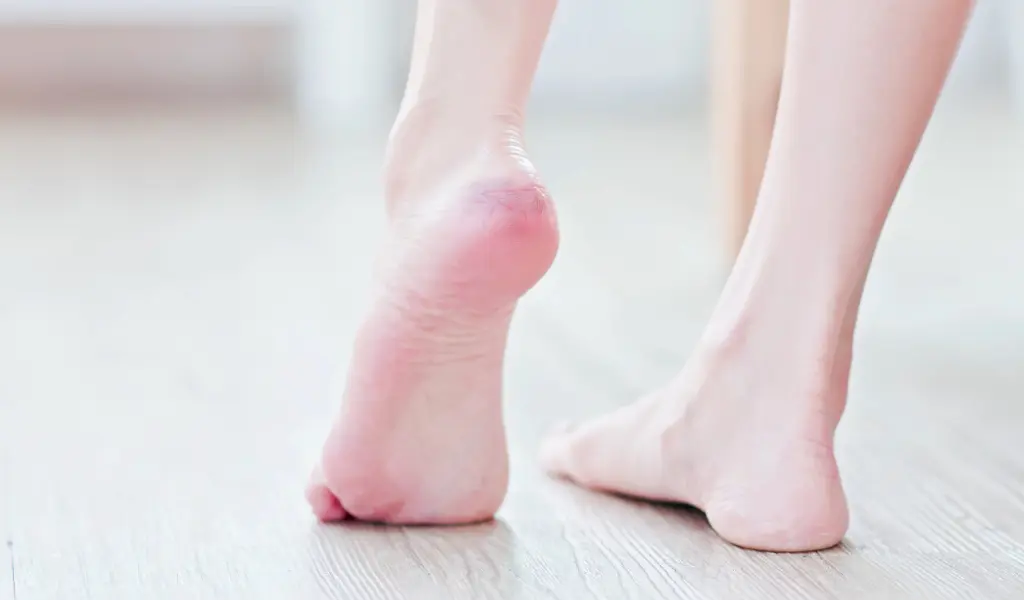Heel pain is a common issue, yet it’s often overlooked. This problem can disrupt your ability to walk, work, or enjoy life’s simplest pleasures. Understanding its causes and solutions is key to regaining mobility and ensuring long-term foot health
You May Also Like: Top Escapes Near Richmond: Your Day Trip Guide.
Common Causes of Heel Pain
- Plantar Fasciitis
The leading cause of heel pain in adults. Plantar fasciitis occurs when the tissue connecting your heel to the toes becomes inflamed. Activities like running, standing for long hours, or wearing improper footwear often trigger it. - Heel Spurs
Bony growths on the underside of the heel can cause sharp pain, especially during the first steps of the day. They often accompany plantar fasciitis. - Achilles Tendonitis
Overuse or strain on the Achilles tendon causes pain in the back of the heel. Athletes are especially prone to this condition. - Bursitis
Inflammation of the bursa (a fluid-filled sac near the heel) can lead to swelling and discomfort. - Stress Fractures
Repetitive impact, often from sports or physical labor, may cause tiny fractures in the heel bone. - Nerve Compression
Conditions like tarsal tunnel syndrome can cause heel pain due to nerve compression in the foot.
Recognizing the Symptoms
Heel pain varies depending on the cause. Common symptoms include:
- Sharp or stabbing pain upon waking.
- Swelling or tenderness in the heel.
- Pain that worsens with activity and improves with rest.
- Difficulty walking or bearing weight on the foot.
- Numbness or tingling sensations (in cases of nerve issues).
When to Seek Medical Help
While mild heel pain often improves with rest and care, persistent pain needs medical attention. Seek help if:
- Pain lasts more than a few weeks.
- Swelling or discoloration increases.
- You experience numbness or loss of motion.
Treatment Options for Heel Pain
- Rest and Ice Therapy
Rest is crucial for recovery. Ice packs reduce inflammation and soothe the affected area. - Stretching Exercises
Stretching the Achilles tendon and plantar fascia can relieve tension. - Orthotic Inserts
Supportive shoe inserts help reduce pressure on the heel and improve alignment. - Anti-Inflammatory Medications
Over-the-counter NSAIDs can alleviate pain and swelling. - Physical Therapy
Therapists provide exercises and techniques to strengthen the foot and reduce pain. - Corticosteroid Injections
For severe cases, injections reduce inflammation and provide relief. - Surgical Intervention
In rare cases, surgery may be necessary to remove heel spurs or repair damaged tissue.
Preventing Heel Pain
- Choose Supportive Footwear: Avoid high heels and unsupportive flats. Opt for shoes with cushioning and arch support.
- Stretch Regularly: Stretch your feet and calves daily to keep tendons flexible.
- Maintain a Healthy Weight: Extra weight increases pressure on your feet.
- Warm Up Before Exercise: Gradual warm-ups reduce the risk of injuries.
- Avoid Overuse: Give your feet breaks during prolonged activity.
Home Remedies to Ease Pain
- Epsom Salt Soaks
Soaking your feet in warm water with Epsom salts can ease soreness. - Massage
Gentle massage improves blood flow and relieves tension. - Rolling Technique
Roll a frozen bottle or tennis ball under your foot to stretch and soothe the heel. - Night Splints
Wearing splints at night keeps the foot in a stretched position, reducing morning pain.
How Heel Pain Impacts Daily Life
Ignoring heel pain can lead to reduced mobility, poor posture, and even back or knee problems. Early intervention is vital to prevent long-term complications.
Conclusion
Heel pain can be debilitating, but it is manageable. Understanding the causes, seeking timely treatment, and adopting preventive measures can make a significant difference. With proper care, you can restore mobility, improve foot health, and enjoy an active lifestyle again.Heel pain is a common issue, yet it’s often overlooked. This problem can disrupt your ability to walk, work, or enjoy life’s simplest pleasures. Understanding its causes and solutions is key to regaining mobility and ensuring long-term foot health.
Common Causes of Heel Pain
- Plantar Fasciitis
The leading cause of heel pain in adults. Plantar fasciitis occurs when the tissue connecting your heel to the toes becomes inflamed. Activities like running, standing for long hours, or wearing improper footwear often trigger it. - Heel Spurs
Bony growths on the underside of the heel can cause sharp pain, especially during the first steps of the day. They often accompany plantar fasciitis. - Achilles Tendonitis
Overuse or strain on the Achilles tendon causes pain in the back of the heel. Athletes are especially prone to this condition. - Bursitis
Inflammation of the bursa (a fluid-filled sac near the heel) can lead to swelling and discomfort. - Stress Fractures
Repetitive impact, often from sports or physical labor, may cause tiny fractures in the heel bone. - Nerve Compression
Conditions like tarsal tunnel syndrome can cause heel pain due to nerve compression in the foot.
Recognizing the Symptoms
Heel pain varies depending on the cause. Common symptoms include:
- Sharp or stabbing pain upon waking.
- Swelling or tenderness in the heel.
- Pain that worsens with activity and improves with rest.
- Difficulty walking or bearing weight on the foot.
- Numbness or tingling sensations (in cases of nerve issues).
When to Seek Medical Help
While mild heel pain often improves with rest and care, persistent pain needs medical attention. Seek help if:
- Pain lasts more than a few weeks.
- Swelling or discoloration increases.
- You experience numbness or loss of motion.
Treatment Options for Heel Pain
- Rest and Ice Therapy
Rest is crucial for recovery. Ice packs reduce inflammation and soothe the affected area. - Stretching Exercises
Stretching the Achilles tendon and plantar fascia can relieve tension. - Orthotic Inserts
Supportive shoe inserts help reduce pressure on the heel and improve alignment. - Anti-Inflammatory Medications
Over-the-counter NSAIDs can alleviate pain and swelling. - Physical Therapy
Therapists provide exercises and techniques to strengthen the foot and reduce pain. - Corticosteroid Injections
For severe cases, injections reduce inflammation and provide relief. - Surgical Intervention
In rare cases, surgery may be necessary to remove heel spurs or repair damaged tissue.
Preventing Heel Pain
- Choose Supportive Footwear: Avoid high heels and unsupportive flats. Opt for shoes with cushioning and arch support.
- Stretch Regularly: Stretch your feet and calves daily to keep tendons flexible.
- Maintain a Healthy Weight: Extra weight increases pressure on your feet.
- Warm Up Before Exercise: Gradual warm-ups reduce the risk of injuries.
- Avoid Overuse: Give your feet breaks during prolonged activity.
Home Remedies to Ease Pain
- Epsom Salt Soaks
Soaking your feet in warm water with Epsom salts can ease soreness. - Massage
Gentle massage improves blood flow and relieves tension. - Rolling Technique
Roll a frozen bottle or tennis ball under your foot to stretch and soothe the heel. - Night Splints
Wearing splints at night keeps the foot in a stretched position, reducing morning pain.
How Heel Pain Impacts Daily Life
Ignoring heel pain can lead to reduced mobility, poor posture, and even back or knee problems. Early intervention is vital to prevent long-term complications.
Conclusion
Heel pain can be debilitating, but it is manageable. Understanding the causes, seeking timely treatment, and adopting preventive measures can make a significant difference. With proper care, you can restore mobility, improve foot health, and enjoy an active lifestyle again.











[…] You May Also Like: The Heel Problem That Threatens Your Mobility […]